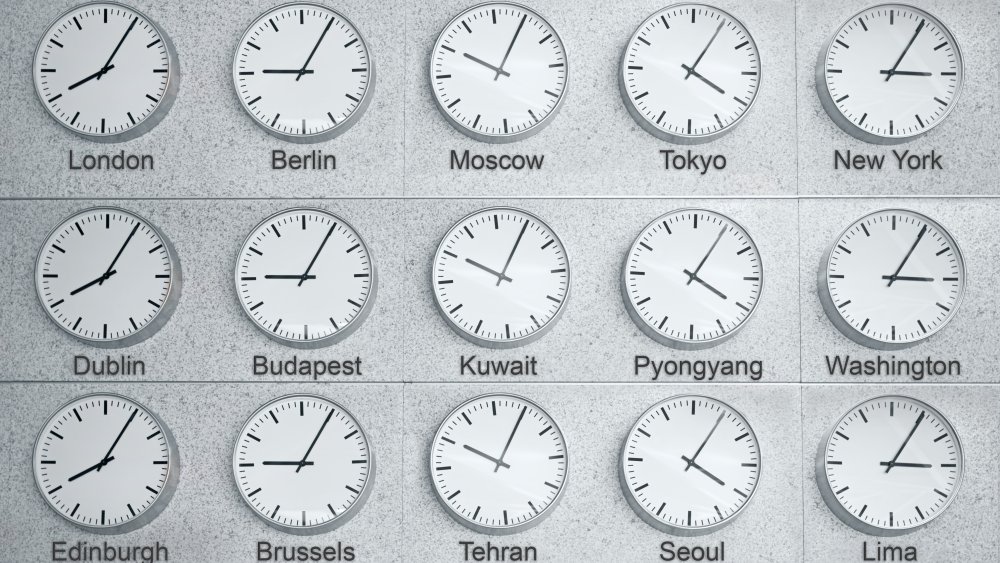The Truth About The Invention Of Time Zones
While convenient, the application of time zones at times reveals their artificiality. At My Modern Met, Jessica Stewart points out how odd it is that countries like Belarus are randomly placed one hour behind Lithuania and Ukraine, which border its north and south, and two hours behind Poland, its direct neighbor to the west. Similarly, the geography of Turkey and Argentina betray the idea that time zones reflect objective timekeeping.
It would be natural now to wonder how we got here, but before addressing international time zones, we have to talk about trains and the 1800s, when most westerners followed solar time, a calculation of time based off the relative position of the sun. Think of a sundial, which catches the light and deploys a shadow to tell the viewer what time it was. In practical terms, this meant each village operated under its own solar time, because their relative position to the sun was unique — the sun strikes each sundial in uniquely, depending on geography, which in turn produces an individualized time.
This was not a problem for most, as the time differences between nearby towns and villages were so small that no one travelling locally paid this any mind. The introduction of the steam engine, however, meant that people could travel so far so quickly that, as Dr. Ralph Harrington explained on Greycat, "[the] railways brought uniform time to Britain and other countries for the first time." Otherwise, coordination between train schedules would be impossible.
Scaling up regulation
The step from railway time to our international time zones was first conceived in 1858 by Quirico Filopanti. As World Timezone notes, however, Filopanti's proposed "longitudinal days," which broke the planet into 24 hourly time zones, were unread until long after his death, so he cannot be credited with the idea. Rather, credit falls to Sir Sandford Flemming, a Canadian engineer and civil servant who, according to the Encyclopedia Britannica, spent his retirement advocating for the adoption of time zones. He suggested this scheme to the International Meridian Conference, convened to determine a prime meridian for international use, in 1884. While they refrained from imposing Flemming's system of time keeping, they did adopt a global 24 hour day that began at the prime meridian.
By 1900, however, countries around the world had accepted some kind of standardized time for their country and by 1929, these times roughly sorted themselves into the time zones we recognize today. The process finished in 1956, according to the Nepali Times, when Nepal coordinated itself to 5 hours and 45 minutes ahead of the prime meridian. With a sense of how past technology necessitated their creation, we can, as an article in Quartz suggests, consider altering time zones even further, to reflect the timeless pace of our new defining technology: the internet.

